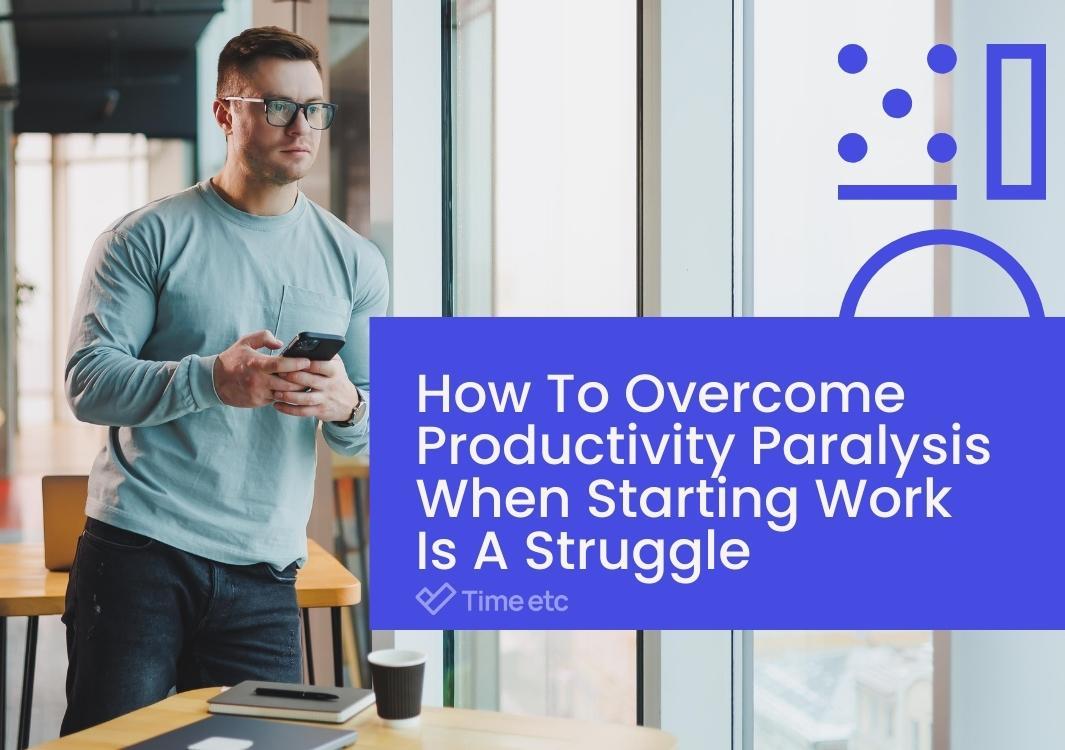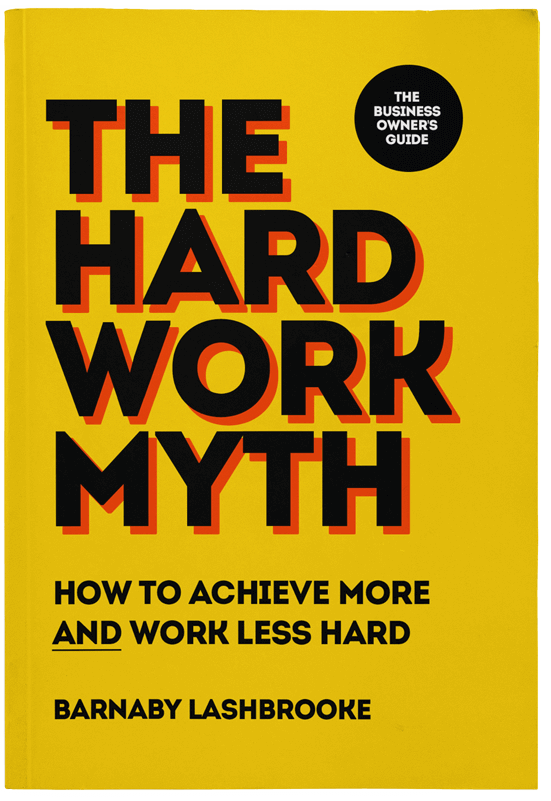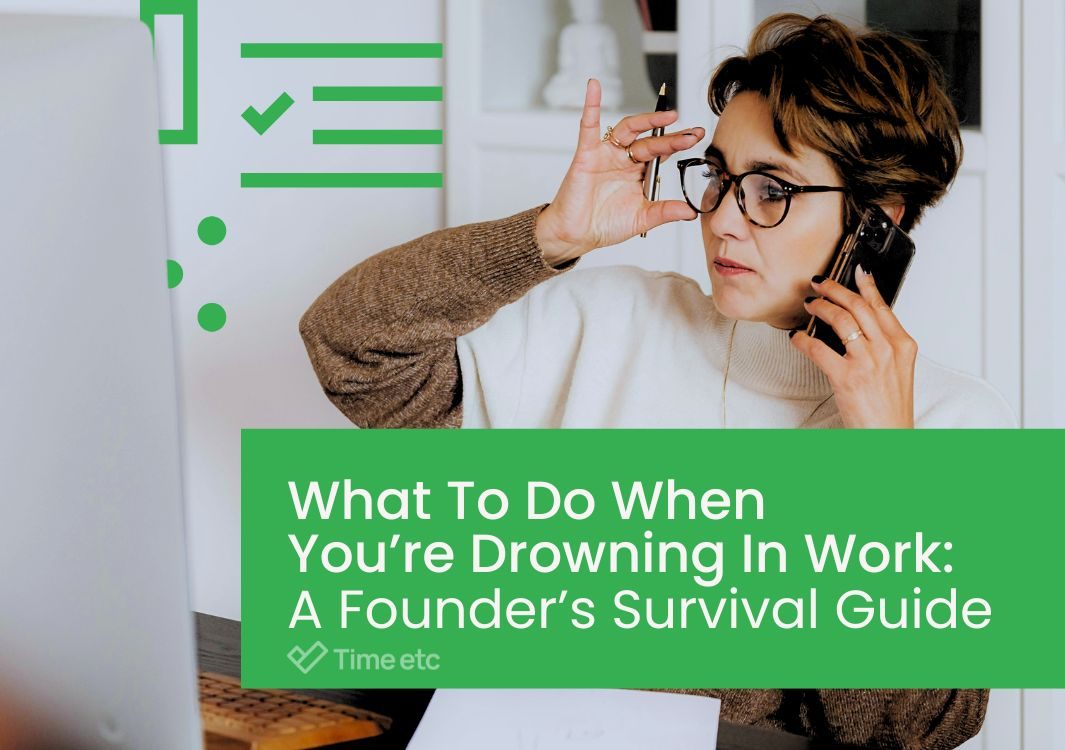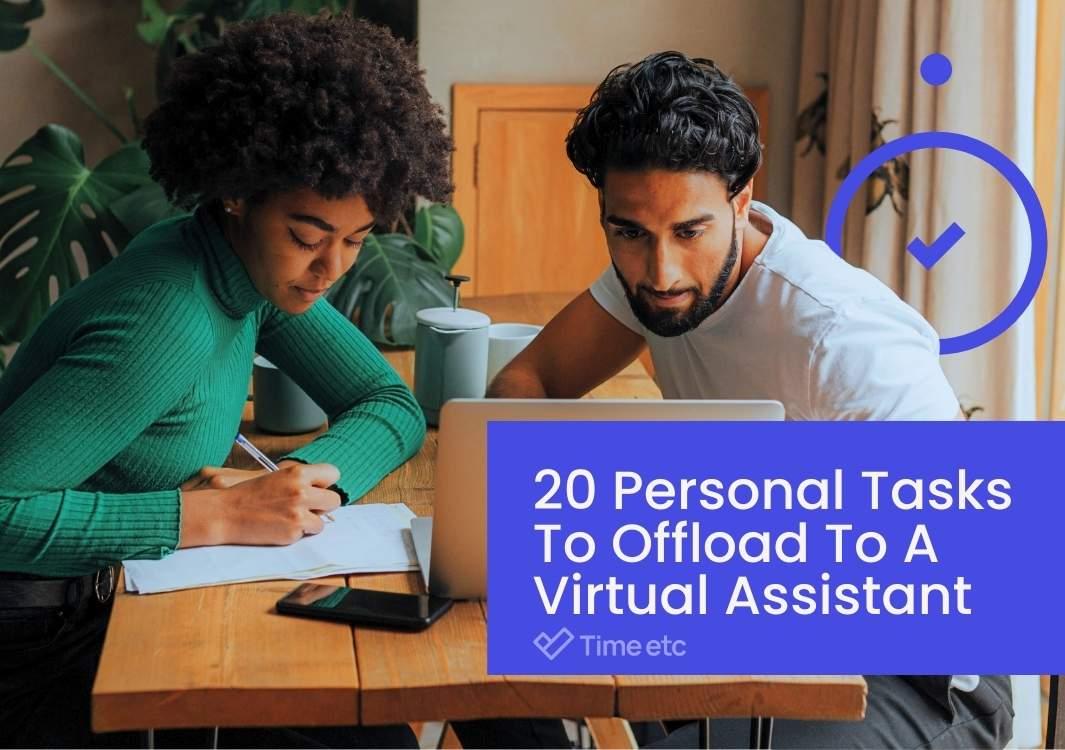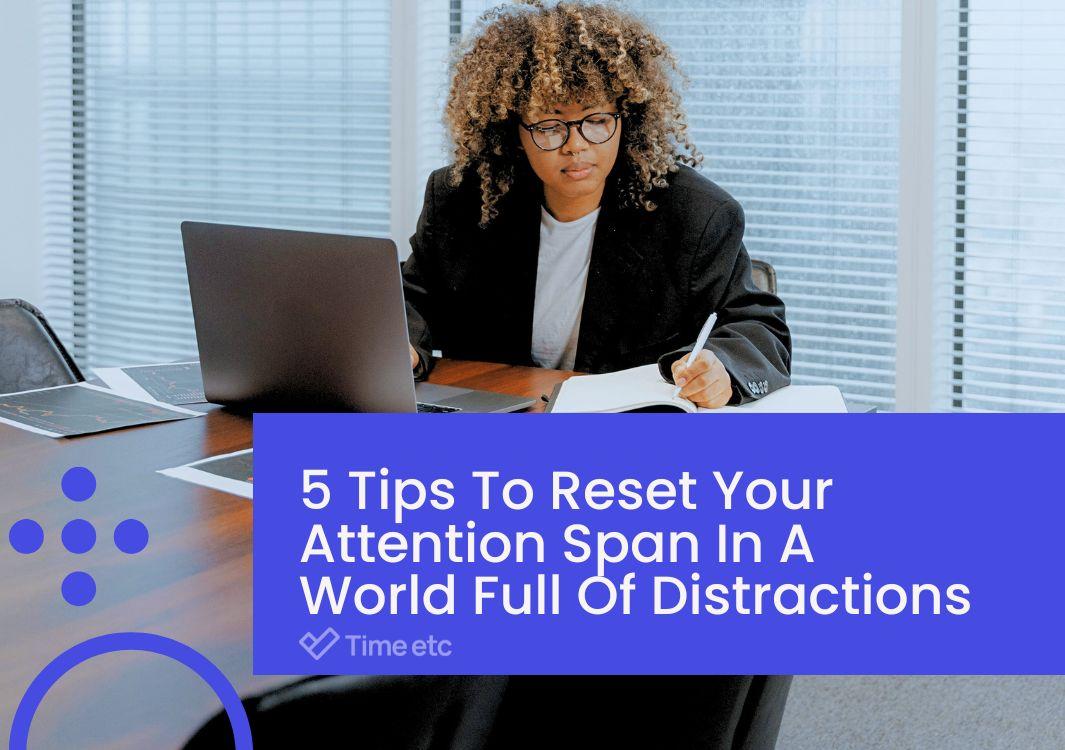Tell me if this sounds familiar.
You wake up in the morning, raring to go. You’ve got a to-do list about a mile long to get through. But when you sit down at your desk, instead of diving right in, you find yourself doing anything but that task. Or worse, you do nothing at all. Instead, you sit there staring at your screen as the stress and frustration rise.
If you can relate to this, know that you’re not alone.
The big question is why we do this to ourselves. Why do we freeze up even when we know what we need to do? More importantly, what can we do to break the cycle?
Why are we struggling to get started on work?
The first thing we need to do is find out what’s causing these mental blocks around our productivity…
Distractions
It’s hard to get in the zone when you're constantly pulled in different directions, and it can feel almost impossible to focus on your tasks when the world around you never stops buzzing.
As emails, texts, social media notifications, and Slack or Teams messages come piling in, it’s easy to get carried away on a whole new tangent and end up miles away from the work you should be doing.
Procrastination
When we’re up against tasks that feel overwhelming, tedious, or just plain uncomfortable, it’s natural to want to avoid them. Whether it's the anxiety that comes from the uncertainty of a new project, or the boredom of repetitive work, these feelings can make us shy away from getting things done.
Instead of tackling the task, we often turn to things that give us immediate comfort or relief—like mindlessly scrolling through social media, browsing online for things we don’t really need, or basically doing anything but what’s on our to-do list. While it feels good in the moment, it only delays the inevitable and can actually add to our stress in the long run, creating a vicious cycle of negative emotions and procrastination.
Perfectionism
Many of us set really high standards for ourselves, and while that's a great motivator, it can also be a double-edged sword. The pressure to meet these high standards can be daunting, and doubt or self-criticism can start to take hold.
Before we know it, we’re caught in a battle between wanting to excel and wanting to avoid falling short. And the higher the stakes, the louder that voice of self-doubt becomes, making it tough to want to take that first step of starting the task.
Paralysis
Ever felt like your brain’s hit a wall while you’re staring down your to-do list? With so many responsibilities on our plates as business owners, this experience is something a lot of us can relate to. However, for those among us with ADHD, this one may resonate particularly strongly.
This feeling of being completely stuck and unable to move forward isn’t laziness or lack of effort—it’s actually one of several biological responses to a perceived threat, including fight, flight, and fawn.
When your brain detects a sense of threat or danger (in this case, a particular task, or an overwhelming workload in general), it might activate this “freeze” response to keep you safe, even if that means temporarily shutting down.
You might notice this paralysis showing up in a few different ways in your daily life:
- Mental paralysis: Ever have so many thoughts and emotions swirling around that it’s hard to even put them into words? That’s mental paralysis. It can feel like your mind is frozen, making it tough to speak, move, or even express what’s going on in your head.
- Task paralysis: This is when your motivation seems to vanish and the sheer weight of your to-do list makes you want to avoid everything. This is that classic feeling of procrastination—knowing what needs to be done but feeling unable to move forward because the pressure is too intense or you don’t know where to begin.
- Choice paralysis: Also known as “analysis paralysis”, this happens when you're faced with too many options or decisions to make. The pressure of making the "right" choice can feel overwhelming, so much so that it becomes hard to make any decision at all.

Five ways to ‘find the start’
As you can see, unfortunately, there are many reasons why we might struggle to get started with important tasks. It might not feel like it in the moment, but the good news is that overcoming these challenges is totally doable with the right approach.
Here are five tips to help you ‘find the start’, no matter what’s holding you back.
1. Create an ‘entry point’
If you have ADHD or issues with executive function, no matter how much you love what you do, sometimes your work can feel like an impenetrable fortress. It might feel like a huge amount of effort is needed to attack and breach its walls, but in reality, it’s as simple as opening a door.
Finding an ‘entry point’ can simplify everything and give you the momentum and confidence to power through. To find it, we need to take a step back.
Often, the first step of a task isn’t what we think it is. For example, if your to-do list says “Write report,” you might open a blank page on the computer and end up watching the cursor blink at you mockingly as you try to come up with a killer opening paragraph.
In this case, “Write report” is not your entry point. Instead, you need to ask yourself what task you need to do before you start writing. Here, it could be something as simple as creating an outline that maps out your key points.
You can apply this approach to any work that you’re struggling to dive into. Start by asking yourself, “What’s the very first thing I need to do to start this task?” Once you’ve identified what that is, ask yourself, “Is there something I need to do before that?”
Keep going until you’ve pinpointed a small, manageable task that you can comfortably do without distraction, perfectionism, or overwhelm holding you back. This is your entry point.
In physics, static friction is always a greater force than kinetic friction—simply put, a still object takes more force to move than an object already in motion. So in other words, your ‘entry point’ task is that little nudge you need to get you moving in the right direction and build some momentum. Once you’ve got past those initial barriers, you’ll find it’s much easier to keep going.
2. Train your brain
As we’ve learned, the human brain is wonderfully complex, but there are some simple tricks you can use to help it work in your favor. One of these tricks is “classical conditioning,” famously demonstrated by Pavlov’s Dog experiment.
Basically, you want to create a connection between a specific sensory cue—like a particular scent, sound, or even your visual surroundings—and the state of mind you need to be productive.
For instance, it could be listening to a particular music playlist, spritzing a specific fragrance, lighting a favorite scented candle, chewing a certain flavor of gum, or even working in a designated spot that helps you get into the right headspace.
The idea is that as you consistently use this cue while working, your brain will start to associate it with being in “work mode.” Whatever you decide to use, just remember to save it for your work time only! This way, your brain can create a strong association between those cues and productivity, making it easier to dive into your tasks when you need to.

3. Try body-doubling
Body-doubling is simply all about working alongside another person to help support and motivate each other, making it easier to focus and stay on task.
The body double does not need to actively help with the task, and they can do something unrelated while you complete the task. They are simply present in the space while you complete the task that needs to be done.
It’s a practice that many people in the neurodivergent community swear by, and for good reason!
Here’s why it’s so effective:
- Social facilitation: Humans are inherently social creatures, shaped by our long history of thriving in communities, and our brains are wired as such. Our aptly named "mirror neurons" enable us to reflect what we observe, helping us pick up social cues and behaviors—it's how babies learn to smile, walk, and interact with their environment. Body-doubling taps into this same principle, but for your work tasks.
- The Hawthorne Effect: This is the phenomenon where individuals tend to change their behavior when they know they are being watched. Working alongside another person makes you more likely to stick to positive and productive behaviors instead of letting yourself be seen succumbing to procrastination.
- Physical anchor: When you're working solo, it can be all too easy to drift off into distractions, but the presence of another person can act as a powerful visual reminder of what you should be doing. And if you do lose focus, they can gently nudge you back on track, helping to keep you accountable and grounded and making it easier to regain your momentum.
The best candidates for body-doubles are people who can work quietly and independently without distracting you. If you can’t find anyone in your immediate circle, virtual body doubles can be just as effective as in-person, and there are plenty of online options for you to consider.
4. Focus on completion rather than perfection
The key thing to remember about perfection is how subjective—and often, undefined—it can be. What feels "off" to us might not even be noticeable to others, and what seems perfect in your mind today might not feel the same tomorrow.
So, breaking the cycle of procrastination caused by perfectionism starts with embracing "good enough." This doesn’t mean dropping your standards completely. Rather, it means setting realistic benchmarks for success instead of chasing an ideal that’s hard to define and even harder to reach.
For example, you could create a checklist to review your work against that will help you maintain a high level of quality without getting lost in the minutiae. Is it free of errors? Does it align with company guidelines? Does it fulfill the project requirements? If it ticks all the boxes, consider it a job well done, and move on to the next thing!
Another helpful strategy is to set a fixed amount of time to work on a task, and then stick to it. Using a timer can break the cycle of endless overthinking and self-doubt by giving you a sense of urgency. After that time’s up, your work should meet the standards you set—and that’s more than enough!
By embracing these structured approaches, you can move forward with confidence and let go of the unrealistic pressure of perfection.

5. Take advantage of technology
Remember when we said that you’re not alone? Well, we really meant it. In fact, surveys suggest that around 90% of the US workforce is affected by distractions at work every day.
This means that, thankfully, there’s a whole world of apps and tools designed to help us tackle this exact problem. Better still, there are options to suit every need and budget.
Focus apps to help drive your productivity
While each app has its own approach, typically, they work in the following way:
- Prevent access to social media, gaming, or news sites during work hours.
- Set daily or weekly limits for specific apps.
- Scheduling apps that allocate time for focus or productivity.
- Tools that monitor your focus and recommend areas for improvement.
Some of the most popular options include:
- Freedom: This handy app blocks your access across all devices, whether you’re on Mac, Android, Windows, or iOS. You can create recurring schedules and set up automatic blocklists to keep those distractions at bay.
- FocusBear: Designed with ADHD in mind, FocusBear blocks time-wasting apps and websites across various devices.
- Stay Focused: If you’re a Chrome user, this free extension lets you set daily limits or completely block specific websites, keeping you on track during work hours.
Built-in mobile features
If you prefer not to download additional apps, your mobile device likely has built-in features that can help, too.
For iOS users, Screen Time tracks your app usage and lets you set limits. Plus, it includes a handy Downtime feature that can help make sure you take breaks away from your phone.
For Android users, Digital Wellbeing offers similar tracking and limit-setting features, along with a Focus Time option that silences notifications to help you stay in the zone.
What’s the bottom line?
As business owners, time is our most precious resource. It’s no secret that the key to success lies in making the most of the hours we have to focus on the work that truly matters.
So, what happens when, despite our best intentions, we find ourselves stuck, unable to get started on the very tasks that can propel our businesses forward?
What happens when our minds, meant to be our greatest assets, become the biggest saboteurs of our productivity?
It’s all about understanding why our minds throw up those barriers and discovering the right strategies to push through them.
So, the next time you find yourself stuck staring at a blank screen or a stressful to-do list, these techniques will help you take back control. While you can definitely try some of these methods on your own, never underestimate the power of support and accountability, whether from colleagues, helpful apps, or virtual assistants. The most important thing is to know yourself and what works best for you.
You’ve got this!

